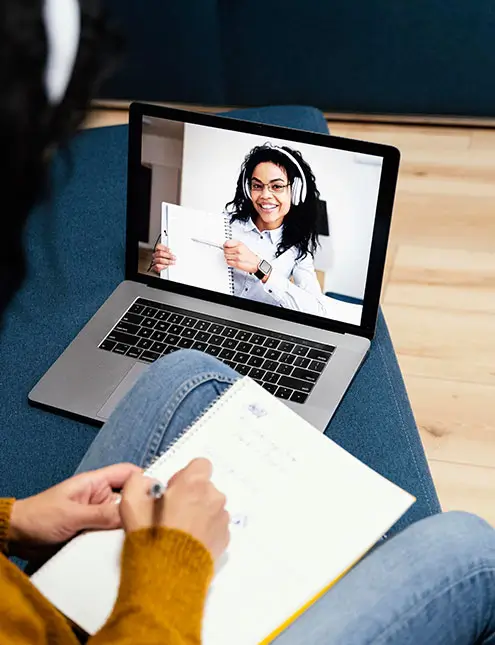OCD and self-harm behaviors represent distinct sets of symptoms that can occasionally overlap. Some individuals with OCD experience intrusive thoughts about harming themselves or others, Known as harm OCD. These thoughts can include various fears, such as accidentally causing harm by leaving the stove on or forgetting to lock a door. While “harm OCD” is commonly referred to in discussing OCD symptoms, It is not a clinical diagnosis.
This blog will cover the similarities, differences, and treatments for OCD and self-harm. It concludes with an overview of treatment approaches for these conditions.
Are the thoughts of self-harm getting too loud?
Understanding the relationship between OCD and self-harm
Ocd and self-harm are different mental health issues, but they overlap sometimes. Self-harm is not a symptom of OCD. Some people may engage in self-harm activities to cope with the distress and anxiety caused by their obsession and compulsion. It is important to know the nuances between these conditions, which is crucial for providing appropriate support and treatment.
Intrusive thoughts: It can occur in both OCD and self-harm, but the underlying mechanism and motivation differ.
Self-harm and Intrusive Thoughts: In self-harm, intrusive thoughts can contribute to the behavior, but the primary motivation is to cope with emotional distress or overwhelming feelings.
Harm OCD and Intrusive thoughts: In harm, Ocd, intrusive thoughts are a core symptom, and compulsive behavior is aimed at reducing anxiety or preventing harm.
How Are Self-Harm Behaviors and OCD Defined?
Self-harm behavior and OCD are defined differently, with each having distinct characteristics and implications. Here is the breakdown of their definition and key points:
Self-harm
- Not a diagnosis, but a behavior in various mental health conditions.
- Deliberate, non-suicidal self-injury
- Coping mechanism for emotional pain or stress
OCD
- A standalone disorder in DSM-5
- Characterized by distressing obsession and compulsion
- Causes significant daily impairment
Harm OCD
- Unofficial subtype of OCD
- Involves intrusive thoughts about causing harm
- The compulsion to prevent continuous harm
Suicidal Ideation
- Thoughts of ending one’s life, requiring immediate attention
- Can occur in OCD, but is not a direct symptom
Seeking appropriate support and treatment is crucial for managing these issues.
What are the differences between Self-harm and OCD
One must understand the disparities that exist between self-harm and OCD to identify and manage mental health issues, which are completely different from each other. Whereas there may be overlapping of these two conditions, their symptoms and motivations differ significantly. Here is a breakdown to clarify the differences.
Self-Harm
- The act of hurting oneself deliberately with no suicidal intentions (e.g., cutting, burning).
- To calm oneself down when emotionally distressed or use self-harm as a form of self-soothing.
- An unhelpful but purposeful behavior.
OCD
- This disorder features intrusive thoughts called obsessions and repetitive behaviors known as compulsions.
- People with harm OCD experience intrusive thoughts related to causing harm to themselves or others.
- Compulsions are rituals performed to prevent perceived harm.
- Harm OCD is not a direct precursor to suicidal ideation or suicide attempts.
- How do the symptoms and motivations differ between the two conditions
Self-Harm
- They do it because they need some way of handling their emotions whenever overwhelmed by them.
- It’s an intentional act used as a maladaptive form of self-soothing in certain cases.
- For some people, it may also co-occur with obsessive-compulsive disorder (OCD) as another outlet for emotional regulation.
Harm OCD
- Such recurring ideas about injuring self or others usually are unwelcome and cause marked discomfort.
- Obsessive fear about implementing those ideas leads to compulsive acts which would prevent any damages caused thereby.
- Rather than being driven by a need for solace, these thoughts generally arise out of fear.
It is important to acknowledge these differences because appropriate assistance and management can be provided for persons with self-harm tendencies and OCD. Each condition has a unique way of caring, and grasping their variations can enable better results for the victims.
Where Do Thoughts About Self-Harm Come From?
For people with Obsessive-Compulsive Disorder (OCD), there may be intrusive thoughts about self-harm. Normally, ego-dystonic thoughts are those that go against one’s values or preferences. These thoughts do not represent the true wishes of the individual, but rather they are symptomatic of the illness. The random thinking intrinsic in the brain alongside the obsessive-compulsive requirement leads to an increased severity and disturbing nature of those thoughts about harming oneself.
Psychological and Emotional Factors Leading to Thoughts on Self-harming
Several psychological and emotional factors may contribute to self-harming ideas emerging among OCD individuals:
- Anxiety and Fear: Worrying too much or becoming highly anxious could trigger repetitive irrational fears of hurting oneself.
- Perfectionism and Control: Many people with Obsessive Compulsive Disorder (OCD) struggle with perfectionism and the need for control. Thoughts about self-harm may come up as a way of managing or dealing with what is perceived by them to be a loss of control over their thoughts and feelings.
- Emotional Dysregulation: Emotional difficulties can contribute to the onset of thoughts of self-harm. Individuals may have intense emotional reactions to stressors and intrusive thoughts, which leads to a distress-obsession cycle.
- Cognitive Distortions: Cognitive distortions including catastrophizing or dichotomous thinking, exacerbate such suicidal ideations. Such distortions make the thoughts appear more threatening and likely lead to increased anxiety and distress in individuals.
- Trauma and Past Experiences: Traumatic experiences as well as past events also play a role in the origin of self-injury thoughts. People who have had trauma in their lives may tend to get intrusive thinking and symptoms resembling those of obsessive-compulsive disorder (OCD).
Targeted interventions such as Exposure Response Prevention therapy, among others can be offered by mental health professionals aimed at helping these individuals cope better, and reduce intrusive ideas, thus enhancing mental health welfare.
What Treatments Help With Self-Harm and OCD?
Effectively managing self-harm and OCD necessitates a holistic approach that deals with both the intrusive thoughts as well as their resulting behaviors. Herein is an overview of the most effective means by which these challenges can be best managed, involving therapeutic modes, medication, and supportive systems.
Overview of Effective Treatments for Self-Harm and OCD
A holistic approach to self-harm and OCD requires combining different treatment strategies. It often involves therapy, drugs, and strong support networks for dealing with multiple facets of these ailments.
Therapeutic Approaches
- Cognitive Behavioral Therapy (CBT): CBT is one of the most commonly used therapies for both OCD and self-harm. It helps people recognize distorted thoughts or beliefs and replace them with healthier more realistic ones.
- Exposure and Response Prevention (ERP): ERP is a specific kind of CBT that is highly effective in managing OCD symptoms. Involving gradual exposure to anxiety-provoking stimuli or intrusive thoughts without allowing patients to engage in compulsive actions weakens the grip they have on sufferers over time.
- Dialectical Behavior Therapy (DBT): DBT is especially useful in the treatment of self-harming behaviors associated with emotional dysregulation. This form of learning imparts skills for coping.
- Acceptance and Commitment Therapy (ACT): ACT helps individuals accept their intrusive thoughts without acting on them, focusing on living following their values despite the presence of these thoughts.
Medications
- Selective Serotonin Reuptake Inhibitors (SSRIs): OCD patients often use SSRIs to reduce the frequency and severity of their obsessions and compulsions. At times, they also help in preventing any such self-harm.
- Antidepressants: Other classes of antidepressants besides SSRIs might be used to manage depression and anxiety that may predispose or amplify self-harming behaviors.
- Mood Stabilizers and Antipsychotics: Such medications are indicated when OCD or self-destructive behaviors are severe or if other therapies have been unsuccessful.
Support Systems
- Individual Therapy: Having regular counseling sessions with mental health professionals creates a learning environment where an individual can explore their thoughts as well as behavior, and learn how to cope with them while getting personalized care.
- Group Therapy: Therefore, it is important to hold group therapy sessions where individuals create connections by sharing experiences among themselves with others’ stories becoming theirs too as they form strong bonds together in their community.
- Family Therapy: The involvement of family members in treatment may provide additional support and enhance communication and understanding within the family unit.
- Support Groups: Peer support groups act as a relief valve for feelings of isolation that accompany feelings of being different from everyone else due to one’s tendency for self-injury.
Diverse treatment options exist for self-harm and OCD including therapeutic approaches, medication, and strong support systems. Among the best treatments are Cognitive Behavioral Therapy (CBT), Exposure and Response Prevention (ERP), and Dialectical Behavior Therapy (DBT). For instance, Individual, group, and family therapies plus medications such as SSRIs will help handle the symptoms. These ways can enable them to have better control of their symptoms thus improving their mental health.
Your Journey to a Brighter Tomorrow
Conclusion
It is important to understand the differences and overlap between self-harm and OCD to provide effective treatment and support. Unlike self-harm which is a coping mechanism for emotional pain, harm OCD leads to intrusive thoughts about causing injury hence leading to anxiety disorder and then compulsive acts of doing something repeatedly. The other very effective treatments include Cognitive Behavioral Therapy (CBT), Exposure and Response Prevention (ERP), Dialectical Behavior Therapy (DBT) as well as SSRIs among other drugs used to treat this condition. In managing these conditions, one has to know that support systems should include individual therapy or counseling sessions, group counseling, or therapy sessions with other people having been diagnosed with it as well so that they can share their experiences during these sessions.\
If you know someone who is struggling with OCD and self-harm from a mental health professional. Proper treatment and care can lead to better outcomes and improved mental health. Reach out to Calusa for good support and start your healthy journey toward recovery today.










